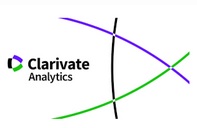Experiencia emocional en juegos tradicionales individuales y cooperativos. Una perspectiva de género.
Agencias de apoyo
- Spain’s Ministry of Science and Innovation
- Catalonian National Institute of Physical Education (INEFC
Resumen
Este estudio exploró el efecto del género (GE) y la composición del género del grupo (CGEC) en experiencias emocionales de hombres y mujeres cuando participaron en diferentes juegos. Para formular nuestra hipótesis se hizo uso del marco teórico elaborado a partir de las teorías de Lazarus y Bisquerra en relación al constructo de la competencia emocional y el bienestar y su relación con estereotipos de género, así como la teoría de acción motriz de Parlebas y resultados previos de la investigación empírica relativa a juegos, emociones y género. Los participantes (218 estudiantes universitarios, Medad = 20.3, DT = 2.73) realizaron doce sesiones de Juegos individuales (IG) y de Juegos cooperativos (CG). Los resultados mostraron que GE y GGEC fueron predictores de la experiencia de emociones positivas y que los hombres expresaron más emociones negativas en ambos juegos. Los hallazgos muestran diferencias de género y podrían ayudar a los profesores de educación física a evitar actividades que promuevan jerarquías y desigualdades asociadas al género y a los estereotipos de sexo.
Descargas
Citas
Beltrán-Carrillo, V.J., Devís-Devís, J., Peiró-Vlert, C., & Brown, D.H.K. (2012). When physical activity participation promotes inactivity: Negative experiences of Spanish adolescents in physical education and sport. Youth & Society, 44(1), 3-27. doi: 10.1177/0044118X10388262
Berg, P., & Lahelma, E. (2010). Gendering processes in the field of physical education. Gender and Education, 22(1), 31-46. doi: 10.1080/09540250902748184
Bisquerra, R, Soldevila A, Ribes R., Filella, G., & Agulló, M. J. (2005). Una propuesta de currículum emocional en educación infantil (3-6 años). C & E: Cultura y educación. 17(1), 5-18.
Bolaños, L. M., & Jiménez, R. (2007). La formación del profesorado en género. [Teacher training in gender issues]. Revista de Investigación Educativa, 25, 77-95.
Brinkman, B.G., Rabenstein, K.L, Rosén, L.A., & Zimmerman, T.S. (2014). Children’s gender identity development: The dynamic negotiation process between conformity and authenticity. Youth & Society, 46(6), 835-852. doi: 10.1177/0044118X12455025
Brody, L. R., & Hall, J. (2008). Gender and emotion in context. In M. Lewis, J. M. Haviland-Jones, & L. F. Barrett, (Eds.), Handbook of emotions (pp. 395-408). New York: The Guilford Press.
Castillo, R., & Montes, B. (2014). Análisis de los estereotipos de género actuales [Analysis of current gender stereotypes]. Anales de Psicología, 30(3), 1044-1060. doi: http://dx.doi.org/10.6018/analesps.30.3.138981
Chalabaev, A., Sarrazin, P., Fontayne, P., Boiché, J., & Clément-Guillotin, C. (2013). The influence of sex stereotypes and gender roles on participation and performance in sport and exercise: Review and future directions. Psychology of Sport and Exercise, 14, 136-144.
Ciarrochi, J., & Scott, G. (2006). The link between emotional competence and well-being: A longitudinal study. British Journal of Guidance & Counselling. 34(2), 231-243. doi: 10.1080/03069880600583287
Del Castillo, O., Romero, S., González, T., & Campos, M. C. (2012). Gender equity in physical education: The use of information. Sex Roles, 67, 108-121. doi: 10.1007/s11199-011-0103-5
Denham, S. A., Bassett, H. H., & Wyatt, T. (2007). The socialization of emotional competence. In J. Grusec & P. Hastings (Eds.), The handbook of socialization (pp. 614-637). New York: Guilford Press.
Diener, E. (2009). Subjective well-being. In E. Diener (Ed.), The science of well-being (pp. 11-58). New York: Spring.
Elias, E., & Dunning, E. (1986). Quest for excitement: Sport leisure in the civilizing process. Oxford: Basil Blackwell.
Etxebeste, J. (2012). À cloche-pied. Les jeux sportifs traditionnels et la socialisation des enfants basques [Hopping on one leg. Traditional sports games and the socialization of Basque children]. Sarrebruck: Editions universitaires européennes.
Gartzia, L., Aritzeta, A., Balluerka, N., & Barberá, E. (2012). Inteligencia emocional y género : más alla de las diferencias sexuales [Emotional intelligence and gender: beyond gender differences]. Anales de Psicología, 28(2), 567-575. doi : http://dx.doi.org/10.6018/analesps.28.2.124111
Gutiérrez, M., Ruiz, L. M., & López, E. (2010). Perceptions of motivational climate and teachers’ strategies to sustain discipline as predictors of intrinsic motivation in physical education. The Spanish Journal of Psychology, 13, 597-608.
Hertenstein, M. J., & Keltner, D. (2011). Gender and the communication of emotion via touch. Sex Roles, 64, 70-80. doi: 10.1007/s11199-010-9842
Hess, U., Senécal, S., Kirouac, G., Herrera, P., Philippot, P., & Kleck, R. E. (2000). Emotional expressivity in men and women: Stereotypes and self-perceptions. Cognition & Emotion, 14, 609-642.
Hochschild, A. R. (1983). The managed heart. Commercialization of human feelings. Berkeley: University of California Press.
Johnson, T. G., Prusak, P. A., Pennington, T., & Wilkinson, C. (2011). The effects of the type of skill test, choice, and gender on the situational motivation of physical education students. Journal of Teaching in Physical Education, 30, 281-295.
Keinman, I. (1999). Should PE classes return to teaching males and females separately? Journal of Physical Education, Recreation and Dance, 70, 11-12.
Kennedy-Root, A., & Denham, S. A. (2010). The role of gender in the socialization of emotion: Key concepts and critical issues. New Directions for Child and Adolescent Development, 1,1-9. doi: 10.1002/cd.265
Lavega, P. (Ed.) (2006). Traditional games and society in Europe: European culture in the light of traditional games and sports. Barcelona: European Association of Traditional Games and Sports, INEFC-University of Lleida.
Lavega, P., Alonso, J. I., Etxebeste, J., Lagardera, F., & March, J. (2014). Relationship between traditional games and the intensity of emotions experienced by participants. Research Quarterly for Exercise and Sport, 85, 457-467. doi: 10.1080/02701367.2014.961048
Lavega, P., Aráujo, P., & Jaqueira, A.R. (2013). Teaching motor and emotional competencies in university students. Cultura, Ciencia y Deporte, 9(8), 5-15.
Lavega, P., Filella, G., Lagardera, F., Mateu, M., & Ochoa, J. (2013). Juegos motores y emociones. Cultura y Educación, 25(3), 347-360.
Lavega, P., March, J., & Filella, G. (2013). Juegos deportivos y emociones. Propiedades psicométricas de la escala GES para ser aplicada en la Educación Física y el Deporte. [Psychometric properties of the Games and Emotions Scale (GES): An instrument for application in the context of physical education and sport]. Revista de Investigación Educativa, 31(1), 151-166.
Lazarus, R. S. (1991). Emotion and adaptation. New York: Oxford University Press.
Lazarus, R. S. (2000). How emotions influence performance in competitive sports. The Sport Psychologist, 14, 229-252.
Morgan, J. N., & Sonquist, J. A. (1963). Problems in the analysis of survey data. Journal of the American Statistical Association, 58, 415-434.
Navarro, V., & Trigueros, C. (Eds.) (2009). Investigación y juego motor en España [Research and motor games in Spain]. (pp. 77-116). Lleida: University of Lleida.
Parlebas, P. (2001). Juegos, deporte y sociedad. Léxico comentado en praxiología motriz. [Games, sport and society: An annotated vocabulary of motor praxeology]. Barcelona: Paidotribo.
Puig, N. (2002). Weibliche Differenz im Sport. Die Situation der Frauen im Sport zu Beginn des neuen Jahrhunderts [Female difference in sport: The position of women in sport at the turn of the century]. Sportwissenschaft, 32(1), 48-67.
Puig, N., & Soler, S. (2003).Women and Sport in Spain. In I. Hartmann-Tews, & G. Pfister (eds.). Sport and women. Social issues in international perspective. (pp. 83-101). London and New York: Routledge, International Society for Comparative Physical Education and Sport.
Sáez de Ocáriz, U., Lavega, P., & March, J. (2013). El profesorado ante los conflictos en la educación física. El caso de los juegos de oposición en educación primaria. [Teachers faced with conflicts in physical education. The case of opposition games in primary school]. Revista Electrónica Interuniversitaria de Formación del Profesorado,16(1), 163-176. doi: http://dx.doi.org/10.6018/reifop.16.1.180101
Schutz, P. A., & Pekrun, R. (Eds.) (2007). Emotions in education. San Diego: Academic Press.
Taylor, W., Yancey, A., Leslie, J., Murray, N., Cummings, S., Sharkey, S., et al. (1999). Physical activity among African American and Latino middle school girls: Consistent beliefs, expectations, and experiences across two sites. Women and Health, 30(2), 67-82.
Vera, J. A., Moreno, R., & Moreno Murcia, J. A. (2009). Relationships between the transfer of responsibility in assessment and the perception of equality in physical education classes. Cultura, Ciencia y Deporte, 4(3), 25-31.
Williams, S. M. (2010). Physical activity levels in coed and same-sex physical education using the tactical games model. Utah: University of Utah.
Las obras que se publican en esta revista están sujetas a los siguientes términos:
1. El Servicio de Publicaciones de la Universidad de Murcia (la editorial) conserva los derechos patrimoniales (copyright) de las obras publicadas, y favorece y permite la reutilización de las mismas bajo la licencia de uso indicada en el punto 2.
© Servicio de Publicaciones, Universidad de Murcia, 2024
2. Las obras se publican en la edición electrónica de la revista bajo una licencia Creative Commons Reconocimiento-CompartirIgual 4.0 Internacional (texto legal). Se pueden copiar, usar, difundir, transmitir y exponer públicamente, siempre que: i) se cite la autoría y la fuente original de su publicación (revista, editorial y URL de la obra); ii) no se usen para fines comerciales; iii) se mencione la existencia y especificaciones de esta licencia de uso.
3. Condiciones de auto-archivo. Se permite y se anima a los autores a difundir electrónicamente las versiones pre-print (versión antes de ser evaluada y enviada a la revista) y/o post-print (versión evaluada y aceptada para su publicación) de sus obras antes de su publicación, ya que favorece su circulación y difusión más temprana y con ello un posible aumento en su citación y alcance entre la comunidad académica. Color RoMEO: verde.













